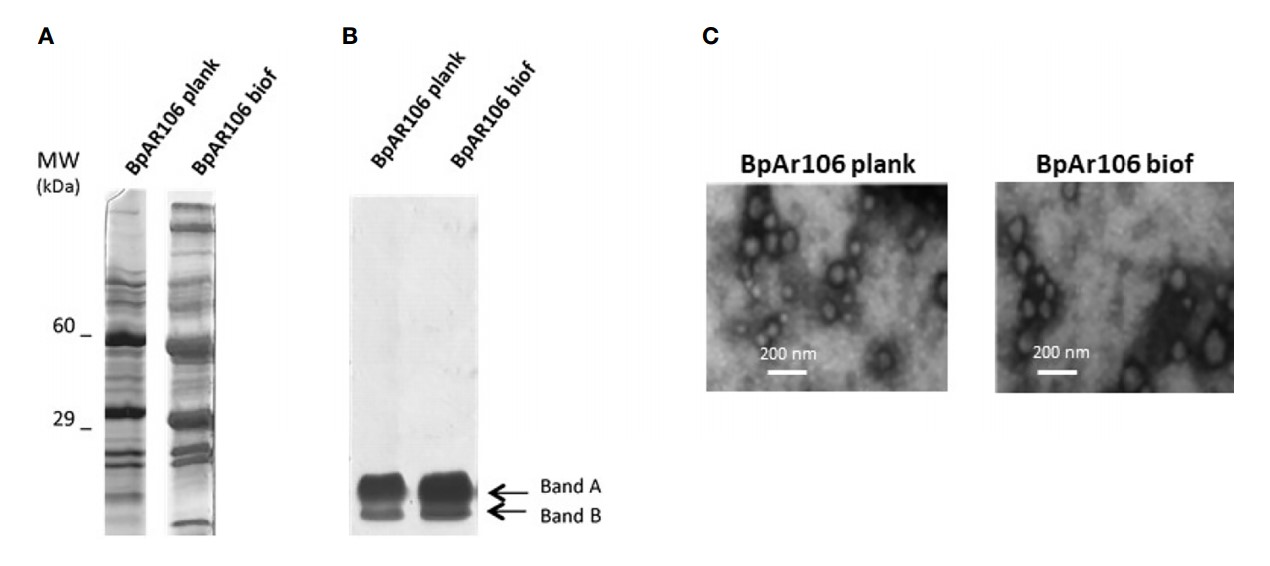Bordetella pertussis-derived Exosome Research and Application
Bordetella pertussis is the primary pathogen responsible for the disease pertussis, commonly known as whooping cough. Despite widespread vaccination efforts, pertussis remains a significant public health concern globally, with outbreaks still occurring. As a result, research is being conducted to develop a more effective next-generation pertussis vaccine, in addition to recommended strategies such as regular booster vaccinations. Bacterial exosomes, also known as outer membrane vesicles, offer several advantages. Not only do they contain the primary immunogenic components of the pathogen, such as LPS, toxins, and adhesins, but they can also stimulate the innate immune response. Furthermore, due to the small size of exosomes, they can be easily processed by antigen-presenting cells. Creative Biolabs is attracted to these features and recognizes the potential of exosomes as an appealing vaccine candidate, capable of offering a broader and more effective immune response against pertussis.
 Fig.1 SDS-PAGE (12.5%) of OMV derived from B. pertussis BpAR106 grown under planktonic or biofilm culture conditions.1,2
Fig.1 SDS-PAGE (12.5%) of OMV derived from B. pertussis BpAR106 grown under planktonic or biofilm culture conditions.1,2
Characteristics of Bordetella pertussis-derived Exosomes
Bordetella pertussis-derived exosomes have the following characteristics:
-
Contain primary immunogenic components: Exosomes carry most bacterial toxins on their surface, but their delivery mechanism differs from isolated toxins.
-
Regulate host immune responses: Exosomes modulate the response of macrophages to bacterial infections through toxins. Macrophages pre-incubated with exosomes show a reduced defense response when exposed to bacteria.
-
Influence macrophage functions: These toxins are delivered via exosomes, weakening the protective functions of macrophages, and reducing their phagocytic and bactericidal capabilities.
-
Induce innate immune responses: Exosomes can trigger the intracellular inflammasome pathway and involve the activation of various related proteins.
-
Engineering transformation: To obtain safer and more effective acellular pertussis vaccines, exosomes are engineered to reduce their endotoxicity. Compared to wild-type exosomes, engineered exosomes exhibit lower toxicity but still retain protective capabilities in mouse models.
In summary, Bordetella pertussis-derived exosomes play a crucial role in regulating immunity, protecting bacterial survival, and influencing disease progression. Their innate immune-enhancing properties make exosomes an ideal platform for vaccine development, and novel vaccine candidates based on this are currently under research and design.
Potential Vaccine Candidates based on Bordetella pertussis-derived Exosomes
|
Form of Bordetella pertussis-derived exosome
|
Research findings
|
|
Exosomes encapsulated in alginate nanoparticles
|
Compared to the group vaccinated with bare exosomes, the group vaccinated with exosomes wrapped in alginate nanoparticles showed significantly increased immune indices and demonstrated the highest lung clearance rate at the lowest injection dose.2
|
|
Exosomes extracted through ultracentrifugation and those extracted through a modified high-speed centrifugation method
|
Both extraction methods yielded exosomes containing three key immunogens: toxin, pertactin, and filamentous hemagglutinin. Thus, this modified extraction method is used for Bordetella pertussis-derived exosome vaccine research.1
|
|
Natural exosomes
|
Bordetella pertussis-derived exosomes offer protection against infections by both Bordetella parapertussis and Bordetella pertussis.3
|
|
Biofilm-derived exosomes
|
Compared to natural exosome vaccines, biofilm-derived exosome vaccines produce antibodies with higher affinity and offer greater protection against Bordetella pertussis infections.4
|
|
Recombinant Bordetella pertussis-derived exosomes expressing the PagL enzyme
|
These exosome vaccines induce a strong Th1 and Th2 immune response and protect mice from Bordetella pertussis infections.5
|
Tab. 1 Bordetella pertussis-derived exosome research findings.
Given these findings, exosomes from Bordetella pertussis demonstrate tremendous potential as a supplement or alternative to existing pertussis vaccines. Creative Biolabs offers cutting-edge microbial exosome research services. If you have any technical needs, please feel free to contact us at any time.
Bacteria-derived Exosome Isolation and Identification
In Vitro Functional Discovery of Bacteria-derived Exosomes
In Vivo Functional Discovery of Bacteria-derived Exosomes
References
-
Carriquiriborde, F.; et al. Pertussis vaccine candidate based on outer membrane vesicles derived from biofilm culture. Frontiers in Immunology. 2021, 12:730434.
-
under Open Access license CC BY 4.0, without modification.
For Research Use Only. Cannot be used by patients.
Related Services:

 Fig.1 SDS-PAGE (12.5%) of OMV derived from B. pertussis BpAR106 grown under planktonic or biofilm culture conditions.1,2
Fig.1 SDS-PAGE (12.5%) of OMV derived from B. pertussis BpAR106 grown under planktonic or biofilm culture conditions.1,2








